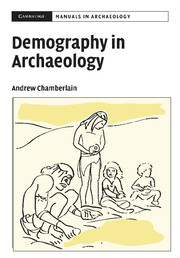Book contents
3 - HISTORICAL AND ETHNOGRAPHIC DEMOGRAPHY
Published online by Cambridge University Press: 02 December 2009
Summary
DOCUMENTARY SOURCES OF DEMOGRAPHIC DATA
Vital registration
Vital registration refers to the collection of data on individual life-history events, such as births, marriages and deaths. In most countries in the present day some form of registration of vital events is mandatory. In England, for example, systematic ecclesiastical records of baptisms, marriages and burials began to be collected in every parish from 1538, and civil registration of births and deaths became a statutory civic requirement in 1837 (Hollingsworth, 1969). In Japan the Buddhist temples maintained registers of deaths from the sixteenth century onwards (Janetta and Preston, 1991). Less frequently, and only in a minority of present-day countries, a population register is maintained with individual records for each citizen which are revised following each vital event. These registers also record citizens' changes of permanent residence, and therefore such registers can provide comprehensive data on internal and external migration.
A common problem with data that are collected in vital registration is that of age heaping, with exact ages being rounded up or down usually to the nearest five or ten years. This may occur where individuals do not know their exact age, or when the age of a deceased individual is reported by a surviving relative or estimated by the person registering the death. Age heaping is often accompanied by an avoidance of ages ending in certain digits, such as the ages 31 years, 41 years and so on.
- Type
- Chapter
- Information
- Demography in Archaeology , pp. 45 - 80Publisher: Cambridge University PressPrint publication year: 2006
- 1
- Cited by

